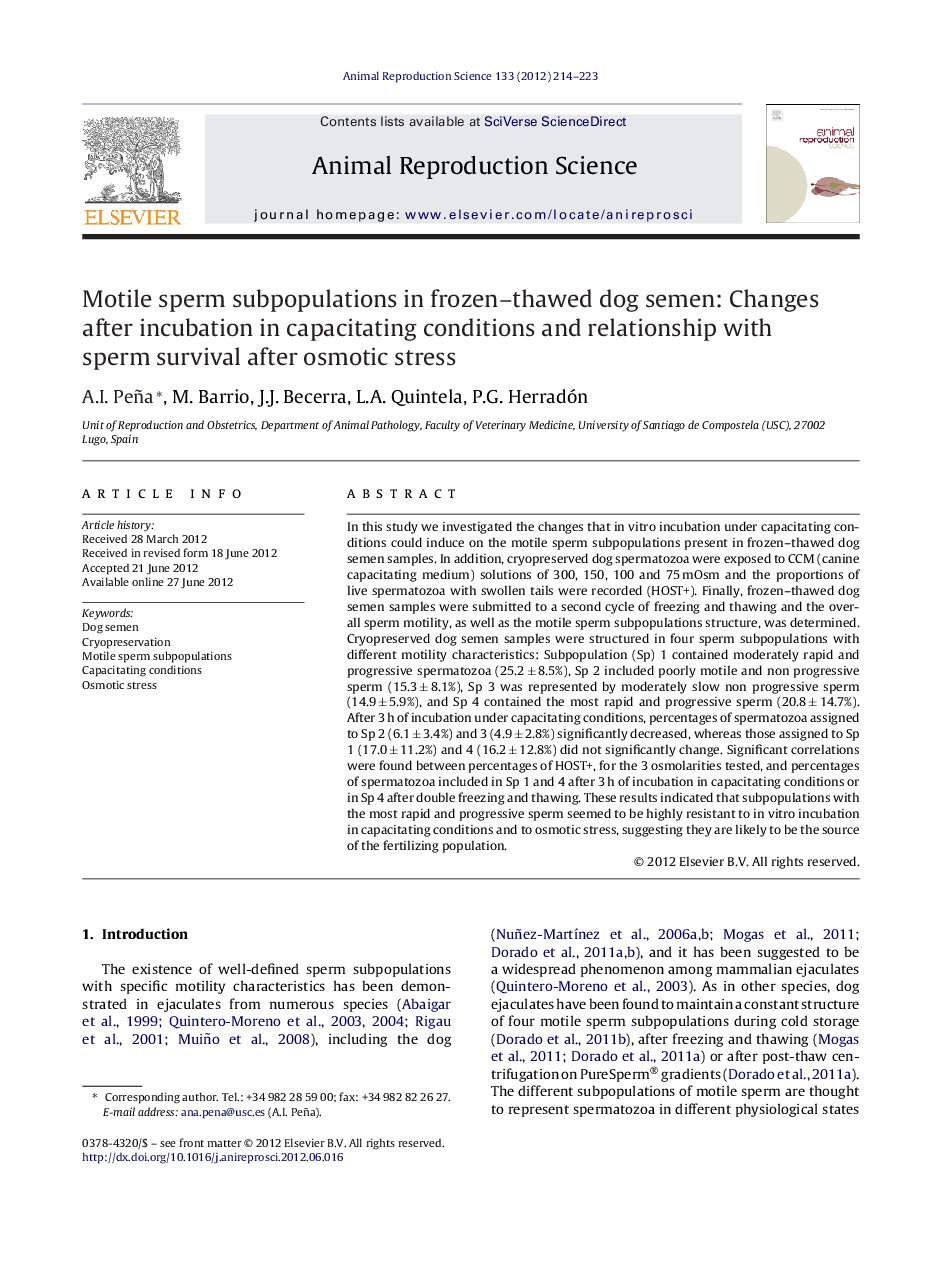| Article ID | Journal | Published Year | Pages | File Type |
|---|---|---|---|---|
| 2073292 | Animal Reproduction Science | 2012 | 10 Pages |
In this study we investigated the changes that in vitro incubation under capacitating conditions could induce on the motile sperm subpopulations present in frozen–thawed dog semen samples. In addition, cryopreserved dog spermatozoa were exposed to CCM (canine capacitating medium) solutions of 300, 150, 100 and 75 mOsm and the proportions of live spermatozoa with swollen tails were recorded (HOST+). Finally, frozen–thawed dog semen samples were submitted to a second cycle of freezing and thawing and the overall sperm motility, as well as the motile sperm subpopulations structure, was determined. Cryopreserved dog semen samples were structured in four sperm subpopulations with different motility characteristics: Subpopulation (Sp) 1 contained moderately rapid and progressive spermatozoa (25.2 ± 8.5%), Sp 2 included poorly motile and non progressive sperm (15.3 ± 8.1%), Sp 3 was represented by moderately slow non progressive sperm (14.9 ± 5.9%), and Sp 4 contained the most rapid and progressive sperm (20.8 ± 14.7%). After 3 h of incubation under capacitating conditions, percentages of spermatozoa assigned to Sp 2 (6.1 ± 3.4%) and 3 (4.9 ± 2.8%) significantly decreased, whereas those assigned to Sp 1 (17.0 ± 11.2%) and 4 (16.2 ± 12.8%) did not significantly change. Significant correlations were found between percentages of HOST+, for the 3 osmolarities tested, and percentages of spermatozoa included in Sp 1 and 4 after 3 h of incubation in capacitating conditions or in Sp 4 after double freezing and thawing. These results indicated that subpopulations with the most rapid and progressive sperm seemed to be highly resistant to in vitro incubation in capacitating conditions and to osmotic stress, suggesting they are likely to be the source of the fertilizing population.
